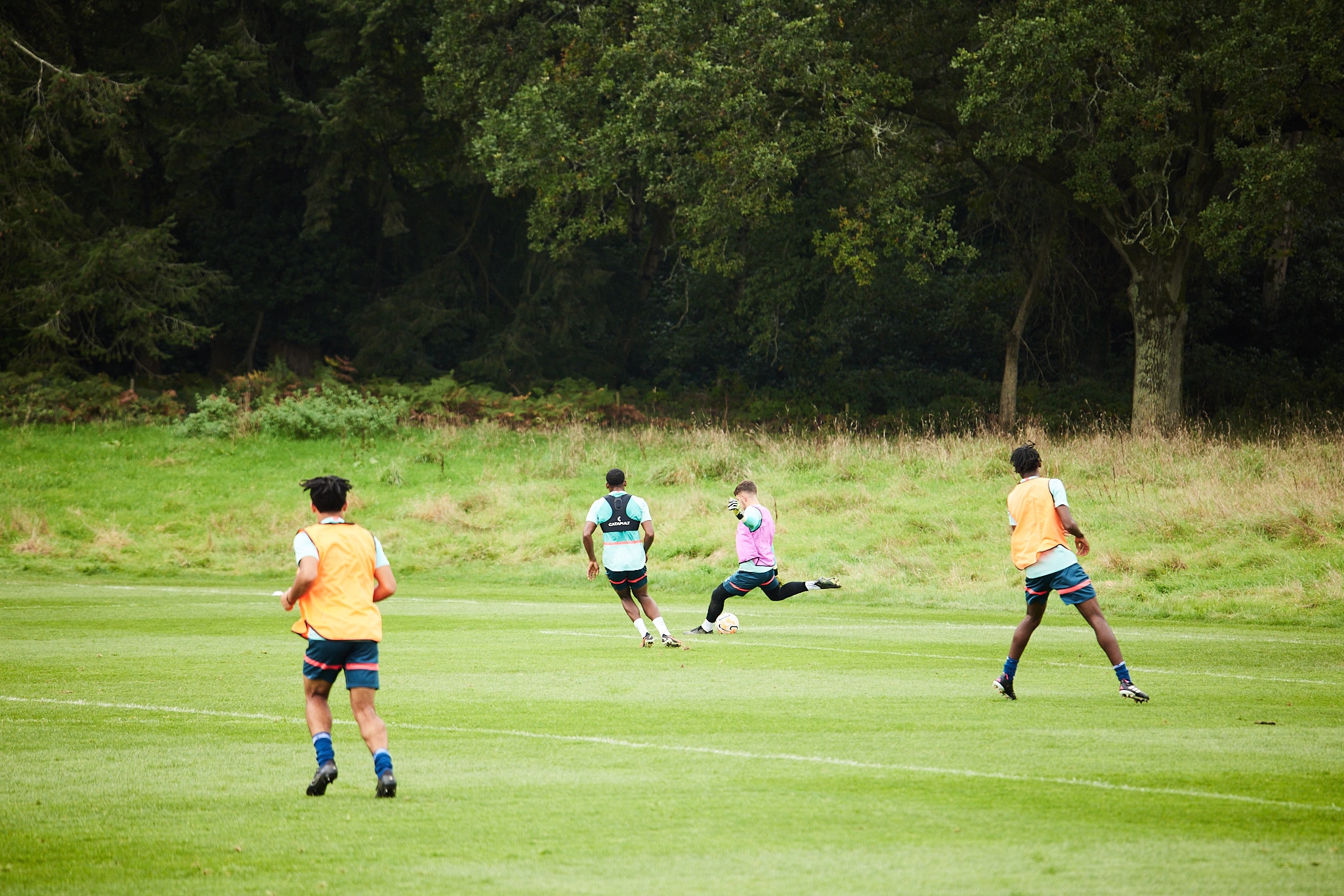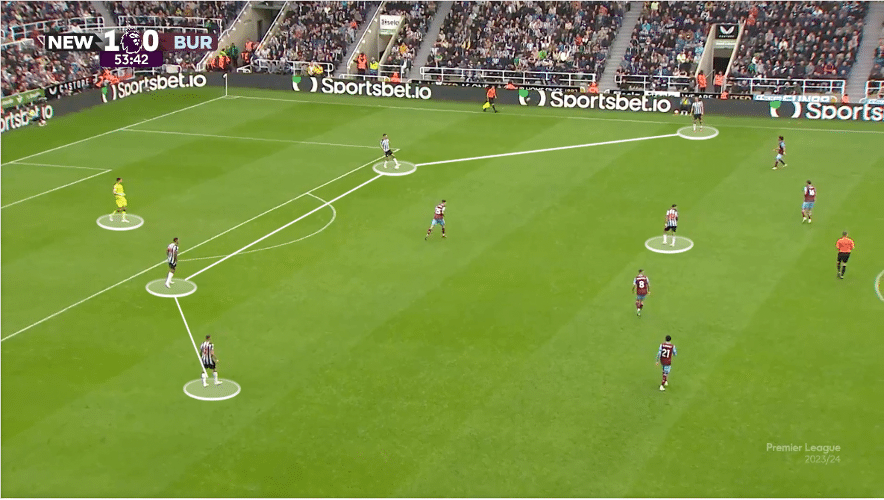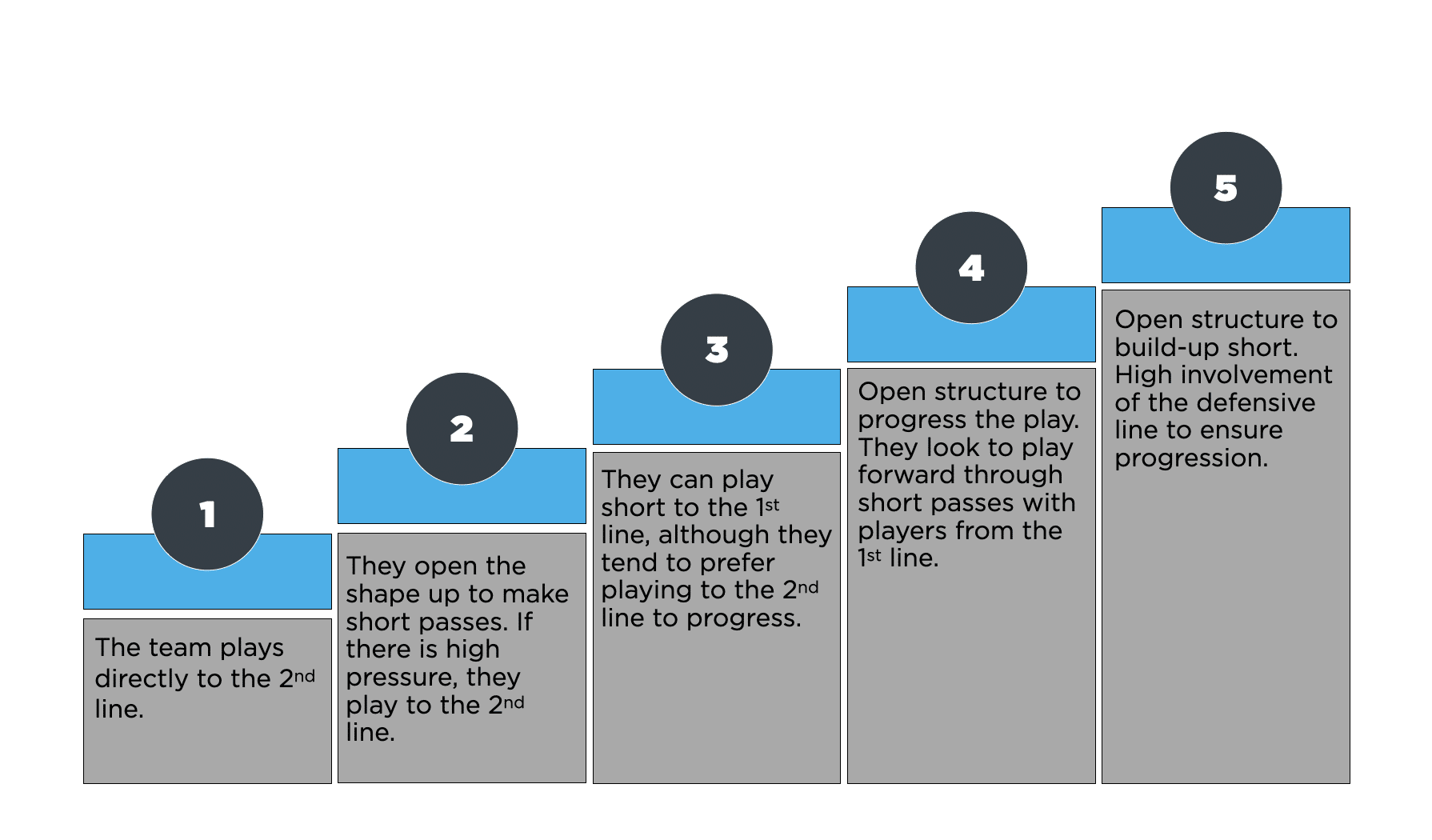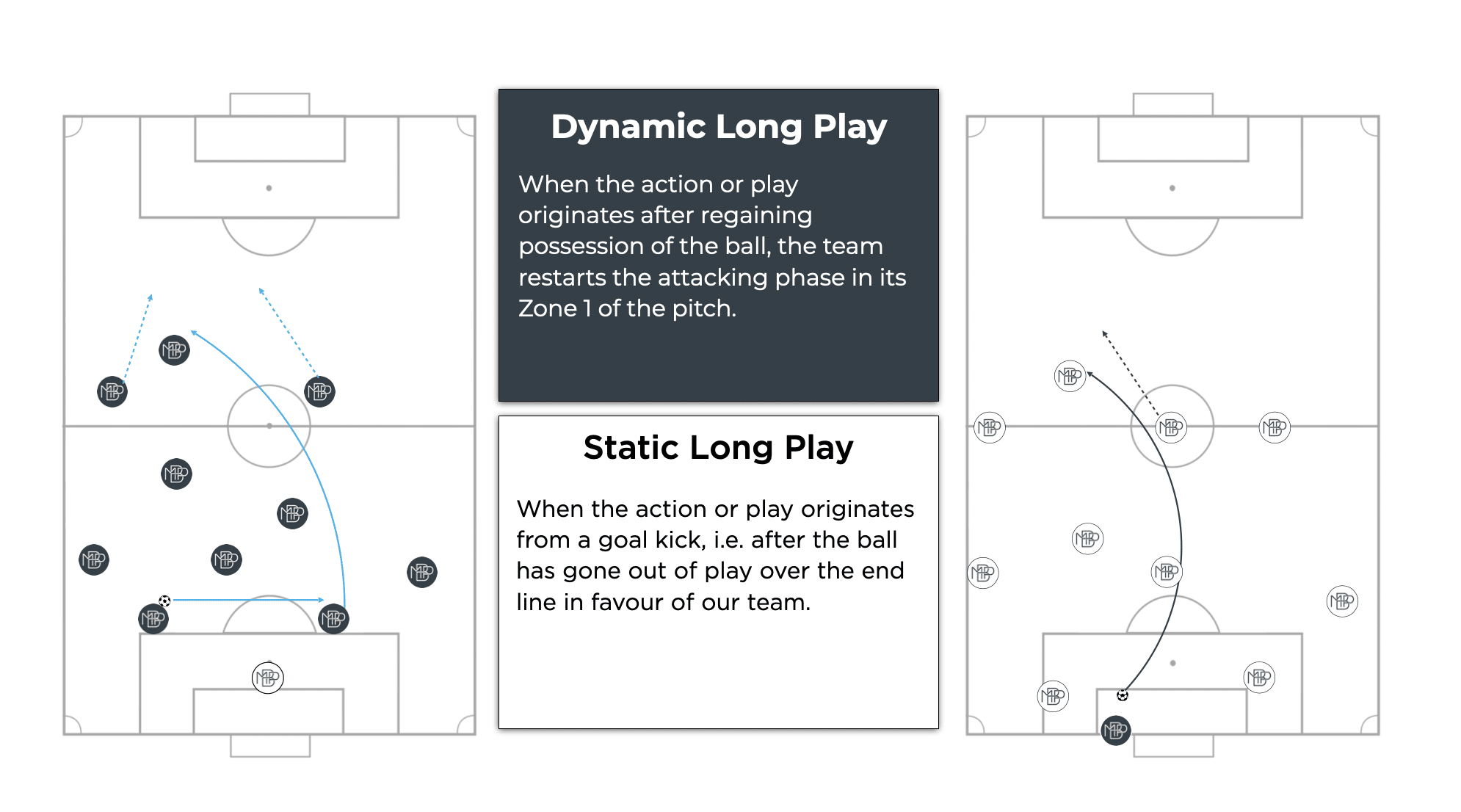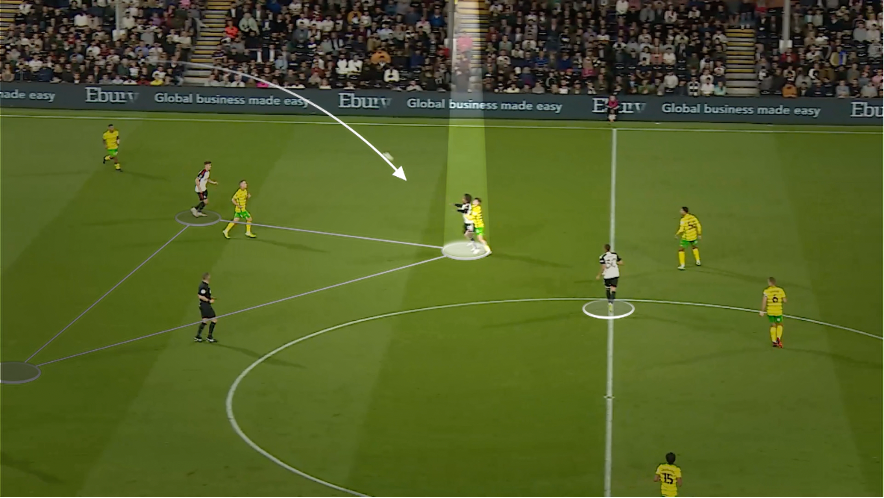When we analyse any team, in addition to its players and the system of play it uses, we also analyse the different phases of the game. Within the attacking phase, MBP Coaches’ School differentiates three key moments: build-up, progression and finishing. In this article, we want to show you the most relevant elements of the build-up of the play.
The start of the play or the build-up refers to behaviours or actions that occur in the area close to the goal itself, i.e. the first third of the field of play (zone 1). MBP Coaches’ School classifies this moment of play in two common ways: short play and long play.
Short Build-Up
It means prioritising short or medium range passes to the first line. The aim is usually to create advantages through ball possession. When a team uses this type of more associative play, it tries to progress by maintaining control and possession of the ball, advancing the ball into the progression zone. Within this type of play, MBP Coaches’ School analyses five elements: the structure of the team, the key players, mechanisms, inside or outside play and the risk assessment that the team adopts. Let’s take a look at each one
- Team Structure
The structure provides specific information on the position of the opposition’s players during that moment of the play.
Image 1. Structure used by Newcastle United at kick-off. Source: Wyscout, season 2023-2024.
If we look at the example in the picture, the team maintains a 1-4-3-3 structure, with the centre backs in central channel and the full backs positioned close to them, and a defensive midfielder just in front of the centre backs. The central midfielders are positioned closer to the wingers and strikers.
- Key Players
We analyse those players who are crucial to the success of the team at that moment of the play. They can be several players or a particularly relevant player, either for their vision and precision with the ball or for their participation without it, being responsible for receiving the ball or enabling teammates through the third man concept.
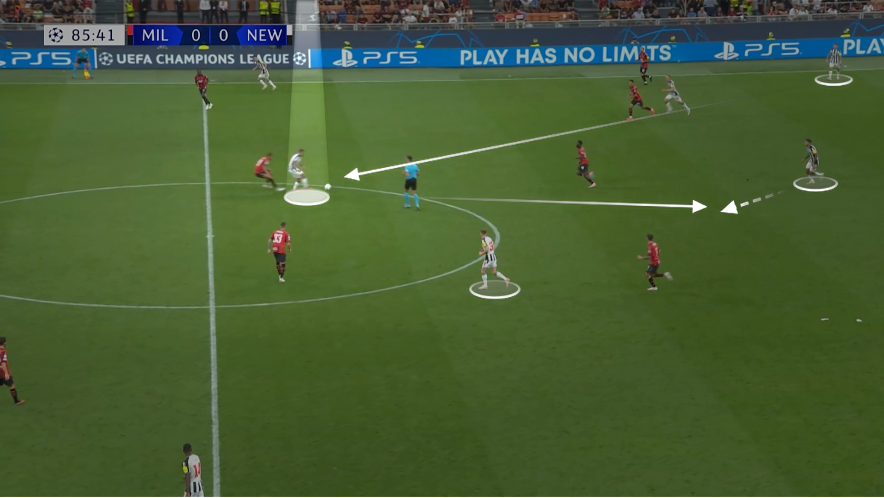 Image 2. Key Newcastle players at the moment of building the play to receive and bounce to their teammates. Source: Wyscout, season 2023-2024.
Image 2. Key Newcastle players at the moment of building the play to receive and bounce to their teammates. Source: Wyscout, season 2023-2024.
- Mechanisms
The aim is to identify the sequence of ball movement in order to analyse the team’s playing patterns. In other words, to understand the purpose behind the team’s ball movement. This can be used to draw the opponent in and create space between the lines, switching the play to attack the side with the greatest advantage, etc.
- Playing Inside or Outside
Within the mechanisms described above, we must identify whether the ball is moved from outside to inside or from inside to outside, identifying the key players and the spaces through which they prioritise progressing with the ball.
- Risk Evaluation
We also analyse whether the team takes certain risks in the build-up or whether it opts to play long balls when under pressure. As part of its risk assessment, MBP Coaches’ School has established a table:
Image 3. Risk Evaluation table, where 1 means taking the least possible risk and 5 means taking as much risk as possible. Source: MBP Coaches’ School
Playing Long
It is the act of playing the ball from the first line to the forwards, with the aim of arriving into the finishing zone as quickly as possible. In most cases, these actions are carried out with a long-distance pass from the goalkeeper or centre backs. Here, MBP Coaches’ School identifies four aspects:
- Structure
As with the short play, describe the specific positioning of the players at the moment of build-up. However, we must consider two situations in which the team structure may vary:
Image 4. Graphical representation of the two types of long passes that can occur in the play. Source: MBP Coaches’ School
- Key Players
In this type of more direct play, it is important not only to consider the player who plays the long ball (usually the goalkeeper or centre back), but also the player who receives it and the receivers of lay offs.
- Mechanisms
We identify the ball circulation sequence to analyse the team’s playing patterns. To do this, we must take three important aspects into account: Where do they play? What kind of movements do they make? Who are the key players?
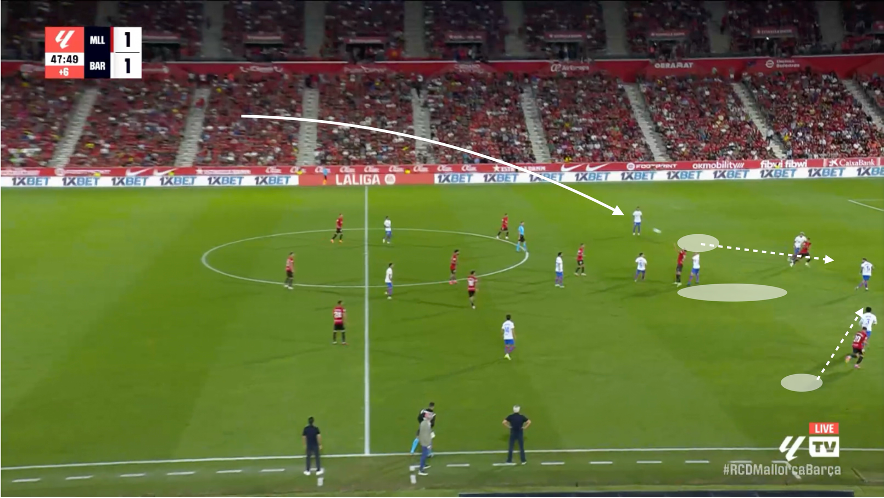
Image 5. Mallorca’s mechanism of playing long balls to the striker, who lays the ball off for the two wingers to make runs in behind, attacking the back of the defensive line if it is high up. Source: Wyscout, season 2023-2024
- Second Balls
The second ball occurs after the first attempt to gain possession of the long ball, where we must analyse the behaviour of the players near and behind the ball. In direct play, the second ball is a very important element in controlling the game.
Image 6. When Fulham plays a long ball to the winger who moves inside to receive it, the striker and both central midfielders move closer for the second phase of play. Source: Wyscout, season 2023-2024
With all that has been discussed, MBP Coaches’ School recommends analysing the parameters described in the build-up of the opposition’s play. This will provide us with more relevant information about our own team, giving us a better chance of success.
Do you want to be a professional analyst?
This online course will give you an in-depth understanding of the MBP analysis model and delve into the functioning and use of professional analysis. You will learn about the latest technological tools and how to use one of them to collect, organise and interpret information according to methodological patterns. This skill will enable you to face competition with a professional analysis of your own team and of your opponents.
In summary, in this course you will learn the basics of match analysis and competition information gathering, allowing you to make coherent and effective decisions.

